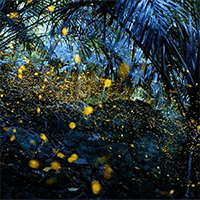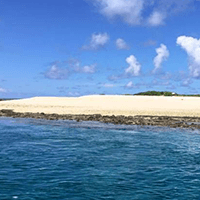- Age 18~Age 100
- 3~4 hours
- 13:00
This small studio is located 4.8km east of the World Heritage site Himeji Castle, a 15-minute drive away. Why not try a pottery experience in between sightseeing? This is a plan for a 3-hour experience. In the pottery experience, you can make all kinds of tableware (tea bowls, vases, plates, glasses, etc.). Bizen ware clay or a blend of Bizen ware clay and red clay is used, and the pottery is fired in an electric kiln. The firing color is ash-covered or scarlet-striped. *I have been learning English for the past 3 years.
- Age 12~Age 100
- 1~2 hours
- 10:00 / 13:00
Surrounded by nature at the foot of a small hill, Shunyoso shows off the graceful expressions of the four seasons that are unique to Japanese-style architecture. The owner, who is also a certified old house appraiser, will guide you through the house and explain the traditional techniques that are difficult to reproduce today, the design that highlights the playfulness of the craftsmen, and the immeasurable historical and cultural value. After the tour, Shunyoso will quickly transform into a sweets shop. Enjoy an elegant moment with tea and Japanese sweets in an elegant space. Shunyoso is a masterpiece of modern Japanese architecture that was designed in 1941 by architect Toyoen Yamamoto, an authority on the study of home orientation, based on the ideas of feng shui, and was completed over a period of seven years by local carpenter Sankichi Saito and others. Further on, in 1983, the walls, gateposts, doors and gardens were renovated by architect Izue Hiroshi, who was even called a "master" by the famous architect Kurokawa Kisho, and they now harmonize beautifully to create a magnificent architectural landscape. The vast grounds of 1320m2 (approximately 1,400m2) contain eight buildings, including the guest house, storehouse, reception hall, sleeping hall and permanent residence, and in 2004 it was designated as a nationally registered tangible cultural property, and in 2017 it was designated as an important structure for the formation of the Hyogo Prefectural Landscape. However, with the aging of the population and a social trend in recent years that only pursues efficiency, it became difficult for the previous owner to maintain and manage the buildings, and they gradually deteriorated, leading to a long period of time when the gates were closed. The turning point came in 2015. In order to preserve this precious cultural asset for future generations, the fourth-generation owner purchased it and began repairs and renovations. Finally, in October 2016, Shunyo-so was revived and reborn as a new international tourist resource for Awaji Island. In this experience program, the owner himself will guide you through the house, explaining the charms of the house, such as the traditional techniques that are difficult to reproduce today, the building materials that are also difficult to obtain today, the designs that highlight the playfulness of the craftsmen scattered throughout, and the elegant furnishings, based on the historical background of Shunyo-so. Please enjoy this space, which is filled with history and culture and represents the best of traditional techniques, to the fullest. After the tour, you will be served tea and Japanese sweets in the tea room or one of your choice. Please enjoy not only as a precious cultural asset, but also as a sweet shop. *Guides in English are also available, so we can accommodate customers from overseas. *A five-minute walk from Shunyoso is the historic and prestigious "Takenoguchi Hachiman Shrine," which celebrated its 1,100th anniversary in 2021. Why not visit the shrine as well? You can also enjoy a stroll through the historical and atmospheric streets of the Takenoguchi area. Experience schedule (The schedule below starts at 10:00, but please read the time differently if starting at 13:00) 10:00 Meet on site 10:05 Check-in and briefing Guided tour of Shunyoso 11:00 Enjoy tea and Japanese sweets in the teahouse. 11:30 End
- Age 6~Age 100
- 2~3 hours
- 10:00 / 13:00 / 15:00
At Senkoji Temple, which boasts a history of 1100 years and has a temple on the summit of Sakiyama, a sacred mountain on Awaji Island, you can visit the main hall while enjoying the view of Sumoto City, one of the eight scenic views of Sumoto, and experience a sutra copying experience in a mysterious silence, which is an extraordinary experience. If you wish, you can also visit Iwato Shrine after the experience. Sakiyama, also known as Awaji Fuji, is said to be the first mountain created in Japan in the legend of the creation of the world by the gods Izanagi and Izanami. At Senkoji Temple, which has a temple on the summit of Sakiyama, you can experience copying sutras. First, you can climb about 200 steps to tour the grounds of Senkoji Temple, learn about the origins of Senkoji Temple, and see the place where the Awaji Island custom of "Dango Korogashi", which is rare nationwide, is performed at the temple. You will also be greeted by a lion-like boar, instead of a lion-dog, enshrined in front of the main hall. Because it is a temple on the mountaintop, you can see the central and southern part of Awaji Island, and if the weather is good, you can see the Naruto Strait and Wakayama. Return to the temple office and go to the "Daishido" to experience copying sutras. In copying sutras, you will copy the general Heart Sutra. Place the paper on top of the model Heart Sutra and copy it with a brush pen. Beginners are also welcome. By copying the characters in a solemn space, you can spend a valuable time reflecting on yourself. You can donate the copy to the temple or take it home. After the experience, you can also visit "Iwato Shrine", a popular power spot that enshrines a huge rock where Amaterasu Omikami hid herself, about 10 minutes down from the temple. (Please note that this is a full-scale mountain path) Experience schedule (for example, if the tour starts at 13:00) Meet at 13:00 *Walk around the temple grounds, including visiting the main hall (guided by the head priest Okazaki) 14:00 Experience copying sutras at the Daishido (approx. 30 minutes to 1 hour) 15:00 Scheduled end *After the tour, you can walk around the temple grounds and visit Iwato Shrine (on your own). It takes about 10 minutes to walk one way up the mountain path to Iwato Shrine.
- Age 12~Age 100
- 2~3 hours
- 10:00 / 14:00
Naohara Gyokusei is a master of Nanga painting who grew up on Awaji Island. He is also a Rinzai Obaku sect monk, and at Kokusei Zenji Temple, which he rebuilt, you can enjoy a beginner-friendly zazen experience and appreciate Gyokusei's friendly Nanga paintings that he personally painted. After the 60-minute zazen experience, you will listen to the current chief priest explain the Zen teachings contained in Gyokusei's works while drinking tea, then move to Minami Awaji City Takikawa Memorial Museum Gyokuseikan (5-minute walk) and view the diverse works of Naohara Gyokusei that are housed in the museum. This is a special experience that expresses the trinity of Nanga, haiku, and Zen, and allows you to feel the spirit of "kugazenichinyo" and reflect on yourself. Naohara Gyokusei is a master of Nanga painting who has ties to Awaji Island. He was also a painter and haiku poet, and a Rinzai Obaku sect monk, and became the chief priest to rebuild the dilapidated Zen temple Kokusei-an (later Kokusei Zenji) on Awaji Island where he grew up. At Kokusei Zenji Temple, which was magnificently rebuilt by Gyokusei, you will first complete a beginner-friendly zazen experience (about 60 minutes), after which you will listen to the current head priest explain the Zen teachings contained in Gyokusei's works while drinking tea, and then view Gyokusei's intimate works, which are privately painted by Gyokusei and housed in a storehouse within the temple grounds. You will be able to view rare sliding door paintings and other works up close without any partitions. After that, you will move to the Takikawa Memorial Museum of Art Gyokuseikan (about a 5-minute walk, 200m), where many of Gyokusei's paintings are on display, and finally view the masterpieces housed in the museum's collection. You will be able to experience a special time to reexamine yourself through the spirit of "Kuga Zen Ichinyo," which expresses the trinity of Nanga, haiku, and Zen that Naohara Gyokusei loved.
- Age 0~Age 100
- 1~2 hours
- 09:00 / 10:00 / 11:00 / 13:00 / 14:00 / 15:00 / 16:00
Awaji tiles have been around for 400 years since the Edo period. As one of the three major tile production areas in Japan, tiles are still being manufactured there. The craftsmen who make onigawara and decorative tiles by hand are called "onishi", and it is a valuable experience to be able to see the craftsmanship of the onishi, who know the soil. Awaji tiles have been around for 400 years since the Edo period. As one of the three major tile production areas in Japan, tiles are still being manufactured there. The craftsmen who make onigawara and decorative tiles by hand, which are indispensable for temples and shrines, are called "onishi", and their numbers are decreasing, with only about 10 on the entire island of Awaji (about 50 nationwide). Tatsumi Co., Ltd., which you will visit on this plan, has five onigawara. The factory tour is a private plan limited to one group per time. With the guidance of the potter's president, Okitsu Yusuke, you will observe the tile manufacturing process and the techniques used by the onigawara craftsmen to make the onigawara tiles. You will also be able to talk to the onigawara craftsmen, who will be happy to answer any questions you may have. Afterwards, in the exhibition area, valuable pieces made during the Azuchi-Momoyama period are on display, giving you a glimpse into the evolution of this traditional craft that has continued for 400 years. Another attraction is that all the onigawara craftsmen's works from the Azuchi-Momoyama period to the present day are on display in one place. After the experience, you will be given a souvenir aromatic tile to choose from and can take home with you. Below is the experience schedule. You will be guided through the tour as follows: 1. Manufacturing site 2. Onigawara craftsmen at work 3. Onigawara collection (exhibition area)
- Age 12~Age 65
- 1~2 hours
- 10:00 / 13:00
The owner travels to coffee-producing regions around the world and carefully selects coffee beans that are thoroughly managed from cultivation to harvesting and transportation! In order to enjoy high-quality coffee with a rich original flavor called "specialty coffee," he roasts and brews the beans himself. The flavor changes drastically depending on the strength of the roast and the time, so adjust the roasting level to match your favorite flavor and aroma. Experience the profound world of coffee. A place in the Shitoori district of Minami Awaji City, where idyllic rural scenery spreads out. After getting off the car, walk for two minutes along a country road surrounded by trees to the Awaji Island Coffee Laboratory "BASE COFFEE," an annex to the premises of "Fuku Cafe," a quiet, hidden old-style cafe. If a cafe is a hideaway, this laboratory has the atmosphere of a "secret base." The owner, who is obsessed with the depth and unanswerable charm of coffee, is researching and studying every day to get to know coffee better and to pursue the creation of "coffee that makes you want to talk about it with others and makes you smile". The owner carefully selects coffee beans from producing areas around the world, including Central and South America, Africa, and Asia, and thoroughly manages the process from cultivation to harvesting and transportation. Using these top quality beans, you will experience roasting, the most important process that determines the taste and aroma of coffee. For the roasting process, we use a roasting pan called "mankashakasha", which is actually used in Ethiopia, one of the countries where we purchase beans. You can choose to roast lightly to bring out the fruity aroma and acidity of citrus fruits, or roast deeply to bring out the richness and bitterness of chocolate, or you can aim for something in between. In either case, it is difficult to conduct heat thoroughly to the inside of the raw beans in order to remove the moisture contained in them. In addition, even if you choose the same beans and roast in a hand pan, the heat transfer changes depending on how the beans roll and how the wind hits them, so even if the conditions are slightly different, the taste will not be the same and an original taste will be created. The staff will give you a thorough lecture, so please feel free to try it. When the roasted beans are cooled and ground in a coffee mill, a scent containing various elements, including the scent of nuts, caramel, and citrus, rises. This is the moment when the coffee beans emit the most aroma in their life. There are hundreds of elements of the aroma, which becomes a complex and rich coffee aroma that fascinates many people. Then comes the finishing process. Hot water is poured over the fragrant freshly ground beans to extract the maximum aroma and flavor, but there is also an appropriate way to pour the hot water. When you put the carefully extracted coffee in your mouth, your face will naturally break into a smile. *One cup of roasted and ground beans will be used for tasting, but you can take the remaining beans home with you.
最近チェックしたプラン
Please wait a moment
![[Hyogo, Himeji City] Limited to one group per day. Experience pottery making using a Bizen ware hand-cranked wheel! Make tea bowls, vases, plates, and more!の画像](https://img.activityjapan.com/10/58328/10000005832801_5i80EZgC_3.jpg?version=1743553864)
![[Hyogo, Sumoto] <Nationally Registered Tangible Cultural Property> The elegant Japanese-style building "Shunyoso" is imbued with the power of Feng Shui. Immerse yourself in the tasteful and precious historical and cultural space.の画像](https://img.activityjapan.com/10/58456/10000005845601_1Gz5AIDf_3.webp?version=1743128703)
![[Hyogo, Sumoto] Experience something out of the ordinary at Senkoji Temple, located on Sakiyama, which is said to be the first mountain to be created in Japan in the "creation mythology" <copying sutras experience>の画像](https://img.activityjapan.com/10/58443/10000005844301_1Gz5AIDf_3.webp?version=1743129423)
![[Hyogo, Minami Awaji] Experience Zen meditation and appreciating the Nanga paintings of Gyokusei Jikihara at a Zen temple associated with the master of Nanga painting who grew up on Awaji Island.の画像](https://img.activityjapan.com/10/58500/10000005850001_1Gz5AIDf_3.webp?version=1743403386)
![[Hyogo, Minami Awaji] 400 years of history! Japan's three major tile production areas: Onigawara craftsmen on Awaji Island: Experience the craftsmanship of Onishi up close and see the manufacturing process! Awaji tile kiln tour experienceの画像](https://img.activityjapan.com/10/58514/10000005851401_1Gz5AIDf_3.webp?version=1743490147)
![[Hyogo, Minami Awaji] Experience roasting coffee beans at a traditional Japanese cafe, grind freshly roasted beans and sample "specialty coffee" and enjoy your own timeの画像](https://img.activityjapan.com/10/58498/10000005849801_1Gz5AIDf_3.png?version=1743402664)







